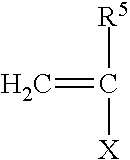Detergent Composition
a technology of detergent composition and detergent, which is applied in the direction of detergent composition, biochemical apparatus and processes, enzymes, etc., can solve the problems of bacteria being a source of bad odor, dirt in the wash liquor tends to stick to the biofilm, and soil is difficult to remove by commercially available detergent compositions
- Summary
- Abstract
- Description
- Claims
- Application Information
AI Technical Summary
Benefits of technology
Problems solved by technology
Method used
Image
Examples
example 1
Prevention of Adhesion and Biofilm Formation on Surfaces Relevant for Laundering and Dish Washing
[0600]In the present study, one strain of Brevundimonas sp. was used. The Brevundimonas sp. was pre-grown on Tryptone Soya Agar (TSA) (pH 7.3) (CM0131; Oxoid Ltd, Basingstoke, UK) for 2-5 days at 30° C. From a single colony, a loop-full was transferred to 10 mL of TSB (Tryptone Soya broth, Oxoid) and incubated for 1 day at 30° C. with shaking (240 rpm). After propagation, Brevundimonas sp. was pelleted by centrifugation (Sigma Laboratory Centrifuge 6K15) (3000 g at 21° C. in 7 min) and resuspended in 10 mL of TSB diluted twice with water. Optical density (OD) at 600 nm was measured using a spectophometer (POLARstar Omega (BMG Labtech, Ortenberg, Germany). Fresh TSB diluted twice with water was inoculated to an OD600nm of 0.03, and 3 mL was added into each well of a 12-well polystyrene flat-bottom microplate (3512; Corning Incorporated, Corning, N.Y., USA), in which coupons of steel (RD12...
example 2
DNAse Mediated Reduction of Stickiness of Biofilm on Plastic Surface
[0601]The Brevundimonas sp. used in Example 1 was also used to the present study, which were pre-grown according to the procedure described in Example 1. After propagation, the Brevundimonas sp. culture was diluted 100-fold in TSB. 125 μl of the 100-fold diluted culture was added to each well of a 96 well polystyrene plate with Nunclon Delta surface (Thermo Scientific, #167008). The plate was incubated at 15° C. for 3 days to allow for biofilm growth. The medium was removed from the wells and the wells were rinsed by adding 300 μl milliQ water. The water was then aspirated. To each well was added 150 μl either 0.1 ppm or 0.3 ppm DNase from Aspergillus oryzae (SEQ ID NO:2) diluted in Model A detergent (Model detergent A)supplemented with 0.7 g / l pigment soil (Pigmentschmutz 09V, wfk, Krefeld, Germany). The Model A detergent solution (the wash liquor) was prepared with water having a hardness of 15° dH. As a control, ...
example 3
DNAse Mediated Removal from Plastic Surface
[0603]The Brevundimonas sp. used in Example 1 was also used to the present study, which were pre-grown according to the procedure described in Example 1. After propagation, the Brevundimonas sp. culture was diluted 1000-fold in TSB. 125 μl of the 1000-fold diluted culture was added to each well of a 96 well polystyrene plate with Nunclon Delta surface (Thermo Scientific, #167008). The plate was incubated at 15° C. for 2 days to allow for biofilm growth. The medium was removed from the wells and the wells were rinsed by adding 300 μl milliQ water. The water was then aspirated. To each well was added 150 μl either 0.03 ppm, 0.1 ppm, 0.3 ppm or 1 ppm DNase from Aspergillus oryzae (SEQ ID NO:2) diluted in water. As a control, 150 μl pure milliQ water without DNase was added. The plate was incubated at 30° C. for 1 hour with shaking (1000 rpm). The enzyme solutions were aspirated and 300 μl milliQ water was added to rinse the wells. The water wa...
PUM
| Property | Measurement | Unit |
|---|---|---|
| Hardness | aaaaa | aaaaa |
Abstract
Description
Claims
Application Information
 Login to View More
Login to View More - R&D
- Intellectual Property
- Life Sciences
- Materials
- Tech Scout
- Unparalleled Data Quality
- Higher Quality Content
- 60% Fewer Hallucinations
Browse by: Latest US Patents, China's latest patents, Technical Efficacy Thesaurus, Application Domain, Technology Topic, Popular Technical Reports.
© 2025 PatSnap. All rights reserved.Legal|Privacy policy|Modern Slavery Act Transparency Statement|Sitemap|About US| Contact US: help@patsnap.com



